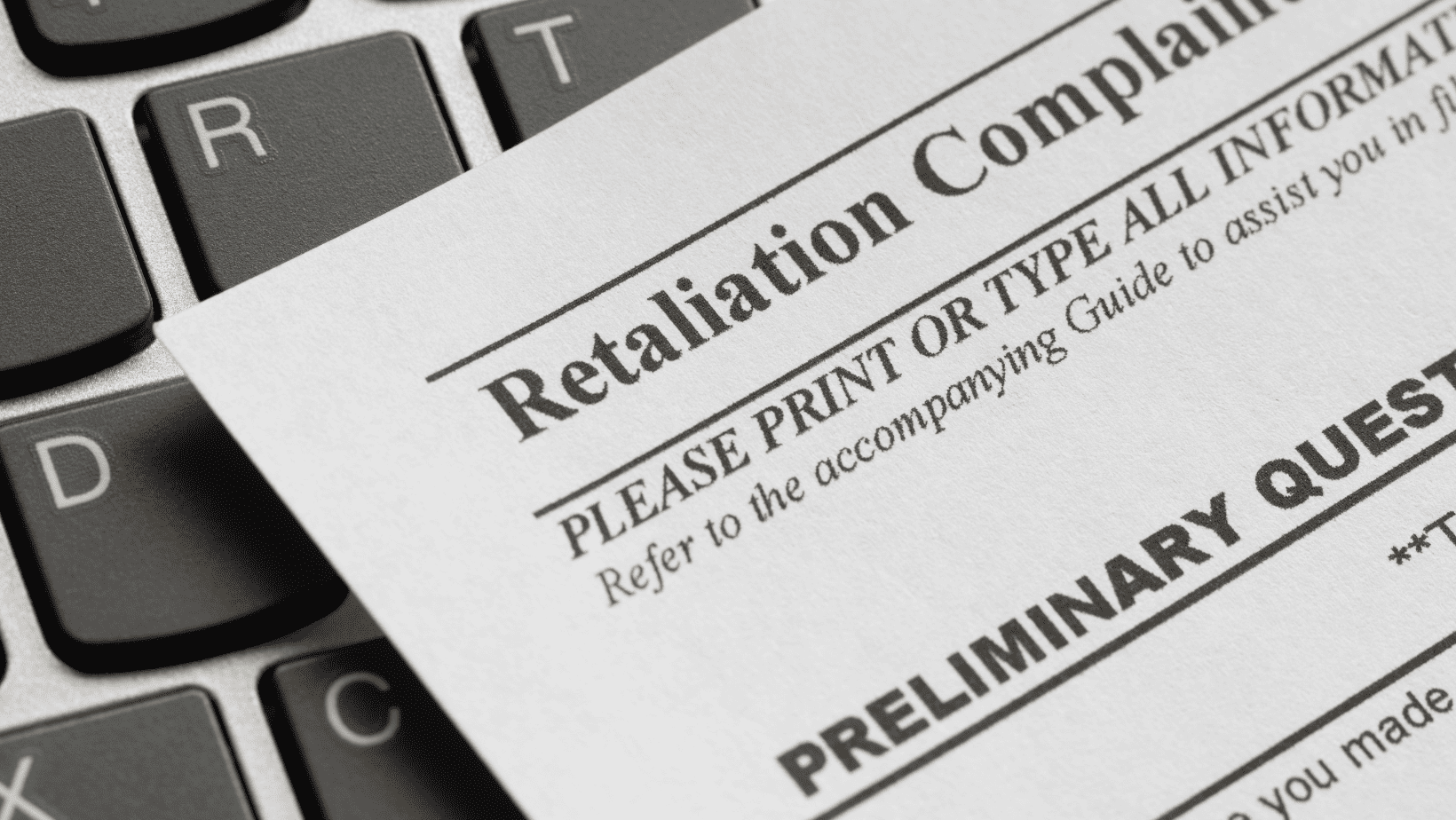I hope you enjoy reading this blog post.
If you want to represent yourself Equal Employment Opportunity Commission (EEOC), these blogs and our guide will help you be successful and get the justice you are looking for.

Do you feel like your rights at the workplace are being violated, or have you wondered what claims go to the EEOC and how the law protects you from discrimination? Enter the world of the Equal Employment Opportunity Commission (EEOC), the guardian of your rights in the workplace. In this blog post, we will guide you through the entire process – from understanding the scope of EEOC claims to taking legal actions beyond EEOC resolution.
Key Takeaways
The EEOC is responsible for enforcing laws prohibiting discrimination in the workplace.
It covers various types of discrimination, including race, color, religion and age.
It provides guidance on protected classes and offers resources to help employers understand their rights under the law.
Info in this Blog
Understanding the Scope of EEOC Claims
The EEOC, an agency of the United States government, is in charge of ensuring that federal laws prohibiting discrimination on certain grounds are adhered to. These include race and color, religion, sex or gender identity, national origin, disability status due to a physical impairment or health condition such as HIV/AIDS, cancer and diabetes among others); age (focusing especially on those aged at age 40 or older+); plus genetic information like family medical history.
When they discover cases involving discriminatory practices – which can take various forms including unequal pay – the EEOC attempts to address it through settlement discussions with employers rather than having recourse directly into court proceedings. One complaint frequently encountered by this organization relates not only to explicit acts associated with discirimination but also any retaliatory ones linked to individuals who have filed charges concerning some kind of unjustified treatment at work based upon these criteria previously mentioned
Types of Discrimination Covered by the EEOC
The EEOC protects individuals from many types of discrimination laws, including race, color, religion, sex (including pregnancy), sexual orientation and national origin. As an example, Title VII of the Civil Rights Act is Title VII of the Civil Rights Act. Act stops employment discrimination on these grounds: race, color, religion. Sex (which includes being pregnant); and one’s nation of birth or origin.
The Age Discrimination in Employment. Act shields people over 40 years old from unfairness at their workplace as it relates to hiring procedures, firing decisions, salary levels, job assignments promotions training opportunities & benefits.
Except for Equal Pay. All other laws enforced by the EEOC require a person filing claims about occupation-based mistreatment to submit firstly file a Charge of Of Discrimination prior to having rights to sue employers who committed such violations.
Any complaints related to racial/ethnic background orientations ; nationality roots age matters – are covered via protection guidelines set up through Enforcement Efforts Consent OrderedbyEqual Opportunity Commission whenever they may file lawsuit based applying charge for unjustified discrimination offenses detected occurred during course employee working relationship exists with company they work within / previously worked before.
Situations Where EEOC Intervenes
The EEOC is involved in addressing workplace discrimination, harassment and retaliation that occurs for any of the legally protected characteristics. These include sex, race, national origin, color of skin or hair as well as religion along with disability plus genetic information (the latter two being applicable only if someone is over 40 years old). Employers must not differentiate an employee’s salary/benefits based on these features, otherwise they will be liable to legal action by the Equal Employment Opportunity Commission.
To this function, it also intervenes when people have been subjected to offensive behaviour related to their identity. A hostile environment caused by prejudice makes up part of such cases too where opting out isn’t possible without risking job security, for instance. This body has handled many suits regarding sexual misconduct which had turned into reprisal situations apart from class actions against recruitment firms who were found guilty after practicing discriminatory procedures while hiring personnel among other incidents.
Retaliation: A Common Claim Filed with the EEOC
An employer taking an adverse action against someone who has engaged in a protected activity, for instance reporting on discrimination or harassment, is referred to as retaliation. This claim must include some form of such protected activity like collaborating in EEO inquiries about grievances or offering pro-employer/neutral data concerning any breaches by the employer.
Examples of retaliatory acts from employers could consist of firing somebody for filing a complaint, extra antagonism, removal and downgrading roles, etc. If they are victorious in their EEOC case, then likely repercussions may be compensation, punitive damages and back pay plus positions in better jobs/promotions being offered too.
Filing a Charge of Discrimination with the EEOC

When filing a charge of discrimination with the EEOC, there are certain steps to follow. Initially, an individual may contact their local office or submit an online inquiry at the Public Portal in order for them to complete a Charge Form via interview and if necessary proceed into counseling or dispute resolution processes that could take place through Alternative Dispute Resolution (ADR). Both federal laws and state agencies can be involved by dual-filing charges as well when they coincide with such federal laws and regulations.
Initiating the Process: Inquiry and Interview
For those filing a charge of discrimination based on color, race, sex, national origin, age, religion or mental/physical disability within 45 days of the action in question, they can begin this process by submitting an online inquiry to be followed up with an EEOC staff interview. After completion and submission through the EEOC Public Portal, there is a 30-day waiting period before it’s possible to initiate legal proceedings against their agency. If you have less than 60 days from when the alleged offense occurred, details will be provided on how to expedite your complaint via email. The public portal as well.
The Role of State and Local Agencies
State and local organizations are very important for upholding anti-discrimination laws, being able to dual file with the EEOC. Whenever a complaint is filed at such agencies following discriminatory practices related to federal law, both those authorities as well as federal agencies such as the Equal Employment Opportunity Commission will be managing it simultaneously since this kind of filing is automatically dual certified.

Free FlowChart to Make Sure you Understand the Process!
Navigating EEOC Procedures for Federal Employees
Federal workers must adhere to particular steps when filing discrimination grievances. The EEOC has given them a deadline of 180 days from the date of alleged discrimination, following which is a mandated period for waiting 30 days before initiating legal action.
For hearings and appeals they can access the government website’s Public Portal created by the EEOC, this should be done within 180 days to meet their requirements under law related to any discriminated actions incurred or experienced discrimination.
Requesting a Hearing or Filing an Appeal
A federal employee may submit a hearing request to the EEOC field office which has jurisdiction over their complaint, including sending in an additional copy of it to the EEO agency. An Administrative Judge will be assigned who is responsible for conducting and supervising that particular case. Appeals can also be filed via the official website. The EEOC Public Portal at https://publicportal.eeoc.gov/Portal/Login allows individuals to file a lawsuit and upload all relevant documents directly toward making their appeal official.
Legal Actions Beyond EEOC Resolution
If the resolution from the EEOC does not meet expectations, people can consider various legal options such as appealing to them for a decision on whether their response was sufficient or filing a lawsuit within 60 days of submitting an official charge. It is recommended that those in this situation consult with an employment law attorney who will provide advice and representation during evaluation of how strong their case may be while protecting their rights throughout the process.
The EEOC's Enforcement Activities
The EEOC supports federal agencies in their EEO programs, offering technical assistance services and guidance on regulations. They monitor and evaluate affirmative action plans as well as distribute educational materials to relevant stakeholders while providing training for those involved. The agency provides advice to Administrative Judges who hear complaints relating to equal employment opportunities alongside adjudicating appeals from administrative decisions made by federal bodies concerning such cases.
Education and Outreach Programs
The EEOC offers a range of services that are completely free and help employers, employees, stakeholders groups understand their rights and obligations under the laws related to discrimination in employment. These include training courses for technical assistance purposes as well as outreach programs which provide information about what the organization does while also offering internship opportunities at times. Such measures are designed with preventing workplace-based discrimination from happening effectively in mind.
Data Collection and Analysis
The EEOC employs data collection and analysis to enforce federal laws that prohibit discrimination in the workplace. This information is integral for figuring out what investigations should be prioritized, where resources need to be allocated, and the subsequent enforcement of charges concerning any discriminatory practices noticed. Data acquisition also allows them an increased level of supervision so they can guarantee proper accuracy during their evaluations. The facts gathered from this process give insight into identifying patterns related to these violations as well as deciding on necessary actions going forward.
Protected Classes and EEOC Guidance
Regarding race, color, religion and sex in the workplace, which is protected by law, the EEOC provides guidance on this matter. This includes filing of complaints to HR or a manager related to identity-based harassment such as discrimination based on gender identity & sexual orientation including pregnancy gender identity & sexual orientation too.
Employers reserve the right for discipline of employees who have filed an EEO complaint, but if adverse employment actions are taken, potential claims may be retaliated against them.
The list of legally protected classes also includes national origin, age and disability apart from Race Color Religion Sex covered earlier mentioned above.
Conclusion
It is important to be familiar with one’s rights in the working environment, so as to guarantee fair treatment and shield against discrimination. The Equal Employment Opportunity Commission (EEOC) has a crucial role in making sure these laws are maintained through carrying out federal regulations, offering educational initiatives and advice regarding various issues that may arise in the workplace. By knowing how the EEOC works and its stipulations, individuals can safely navigate their work life while ensuring they are not facing any form of bias or injustice.
Frequently Asked Questions
What is the most common complaint brought to the EEOC?
The EEOC receives the most complaints of retaliation, making it the top issue reported.
How successful are EEOC complaints?
According to a 2021 report, 63% of those who lodged discrimination complaints with the Equal Employment Opportunity Commission (EEOC) were eventually terminated from their jobs. With such low success rates – only 2% achieving favorable outcomes for employees – defending against an EEOC claim can be a risky venture for employers.
What are the chances of winning an EEOC case?
The Equal Employment Opportunity Commission (EEOC) has achieved successful results in close to 96% of all federal court cases initiated by their complaints, making the prospect of winning an EEOC case quite encouraging.
What is the average payout for EEOC claims?
Typically, when a claim is lodged with the Equal Employment Opportunity Commission (EEOC), its resolution results in an average settlement of $40,000. Nevertheless, it can be higher depending on each individual case.
What types of discrimination are covered by the EEOC?
The EEOC safeguards people from prejudice due to race, color, faith, sex or national origin. As well as age and hereditary information. It is their mission to protect everyone’s right not to be discriminated against based on any of these characteristics.
Do you want Justice in front of the EEOC
Get Started Today and make the moves necessary to take back your freedom and right the wrongs at your workplace.

About Brandon
A licensed attorney with over 10 years of experience – I’ve noticed a lack of support for people who want to represent themselves in court.
So, I’ve created video guides that will help you gain back control of some of the least predictable situations you could experience in your lifetime.
Emloyment law Guides
Do You Want Justice In Front Of The EEOC
Get Started Today and make the moves necessary to take back your freedom and right the wrongs at your workplace.